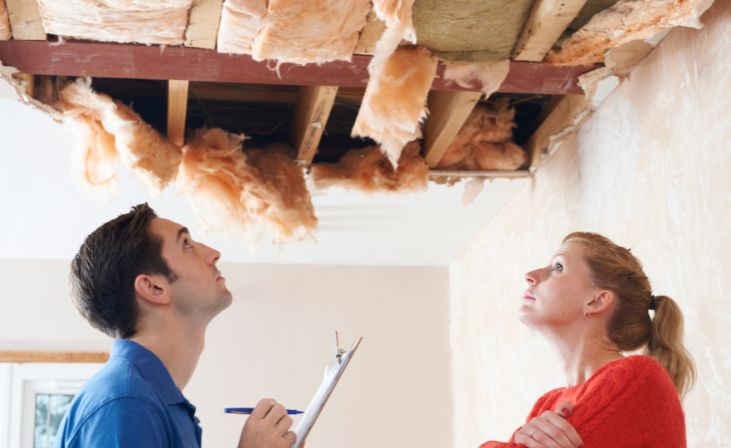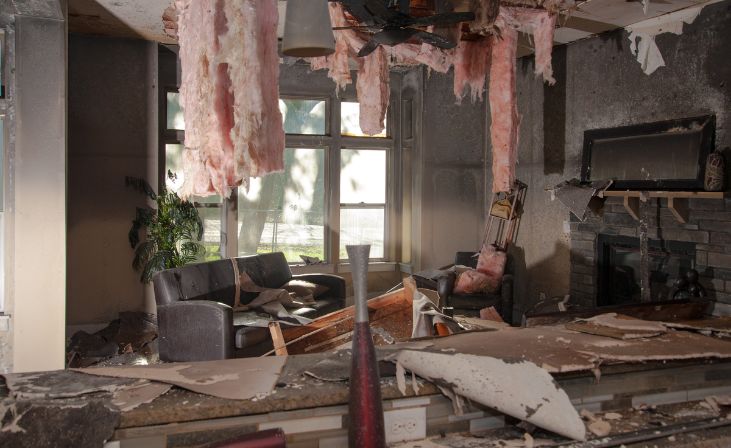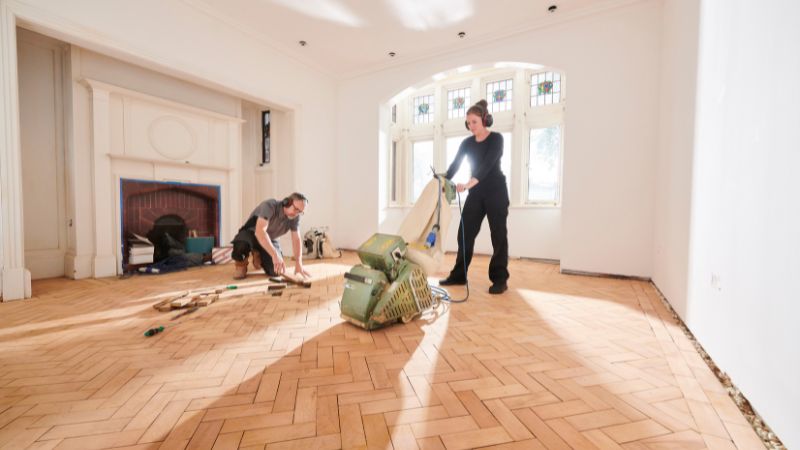Restoring your home after damage or wear and tear can feel like a daunting task, but with the right guidance and approach, it’s entirely manageable. Whether you’re dealing with water damage, fire damage, or simply want to refresh and renew your living space, having a step-by-step plan can make the restoration process smoother and more successful. In this comprehensive guide, we’ll walk you through common household restoration projects, providing step-by-step instructions, helpful tips, and expert advice along the way.
From assessing the damage and planning your approach to executing repairs and putting the finishing touches on your restoration project, we’ve got you covered. By following these guidelines and taking a methodical approach, you can restore your home to its former glory and create a safe, comfortable, and beautiful living environment for you and your family.
Guidance For Common Household Restoration
Assess the Damage

Before diving into any restoration project, it’s crucial to thoroughly assess the extent of the damage. This involves conducting a comprehensive examination of the affected areas, paying close attention to any signs of structural issues, water damage, fire damage, or other forms of deterioration. By conducting this initial assessment, you’ll gain a clear understanding of the scope of the restoration work required and be better equipped to develop an effective plan of action tailored to address specific needs and challenges.
Read also – 10 Budget-Friendly Home Improvement Ideas for Small Spaces
Create a Restoration Plan
Once you’ve assessed the damage, the next step is to create a detailed restoration plan. This plan should outline the specific steps and strategies you’ll need to implement to restore your home to its former condition. Consider factors such as budget, timeline, and available resources as you develop your plan. Break down the restoration process into manageable tasks, prioritizing critical repairs and addressing any safety concerns first to ensure a systematic and efficient approach to the project.
Gather Necessary Tools and Materials
Before commencing any restoration work, it’s essential to gather all the necessary tools and materials required for the job. Depending on the nature of the project, you may need a variety of hand tools, power tools, and specialized equipment. Stock up on building materials, paints, adhesives, and other supplies needed to complete the restoration project efficiently and effectively. Having everything you need on hand will help streamline the restoration process and minimize delays.
Protect Yourself and Your Home

Safety should always be a top priority when undertaking household restoration projects. Take proactive measures to protect yourself and your home from potential hazards. Wear appropriate personal protective equipment, such as gloves, safety goggles, and dust masks, to safeguard against injuries and exposure to harmful substances. Additionally, take steps to protect your home and belongings during the restoration process, such as covering furniture and valuables with tarps or plastic sheeting to prevent damage.
Address Structural Issues
Addressing any structural issues is paramount to the success of your restoration project. Structural damage can compromise the integrity of your home and pose safety risks if not properly addressed. Consult with qualified professionals, such as contractors or structural engineers, to assess the stability of your home and develop a plan for reinforcing or repairing damaged structural elements. Prioritize these repairs to ensure the safety and stability of your home before proceeding with cosmetic repairs.
Mitigate Water Damage
Water damage can wreak havoc on your home, leading to mold growth, wood rot, and other serious issues if left untreated. If your home has experienced water damage, it’s essential to act quickly to mitigate the damage and prevent further deterioration. Remove standing water using pumps or wet vacuums and thoroughly dry out affected areas using fans, dehumidifiers, and proper ventilation. Dispose of damaged materials that cannot be salvaged to prevent mold and mildew growth.
Address Fire Damage

Fire damage can leave behind significant destruction, including charred walls, smoke odor, and structural instability. If your home has been damaged by fire, prioritize safety and seek assistance from fire restoration professionals. Work with experts to assess the damage and develop a comprehensive plan for restoration. This may involve tasks such as cleaning and deodorizing smoke-damaged surfaces, repairing or replacing damaged structural elements, and restoring electrical and HVAC systems to ensure the safety and functionality of your home.
Repair and Replace Damaged Materials
Once you’ve addressed any structural issues and mitigated water or fire damage, it’s time to repair or replace damaged materials in your home. This may involve tasks such as patching drywall, replacing flooring, repairing plumbing fixtures, and installing new cabinetry or countertops. Take care to match materials and finishes to existing elements in your home for a cohesive and seamless look that enhances the overall aesthetic appeal of your living space.
Refinish and Refresh
With the structural repairs complete, it’s time to refinish and refresh your home’s interior and exterior surfaces. This may include tasks such as painting walls, refinishing woodwork, installing new trim, and updating fixtures and hardware. Consider adding decorative elements such as accent walls, crown molding, or upgraded lighting to enhance the visual appeal of your home and create a welcoming and inviting atmosphere for you and your family to enjoy.
Final Touches and Clean-Up

Once all repairs and renovations are complete, take the time to add the finishing touches to your restoration project. This may include tasks such as landscaping, installing window treatments, hanging artwork, and arranging furniture to create a cohesive and harmonious living space. Conduct a thorough clean-up of the work area, removing debris, dust, and construction materials to reveal the full beauty of your restored home and ensure a safe and comfortable environment for you and your loved ones.
Celebrate Your Achievement
Finally, take a moment to celebrate your achievement and the successful completion of your restoration project. Restoring your home is a significant accomplishment that requires hard work, dedication, and perseverance. Invite friends and family to share in your joy and enjoy your newly restored living space together. Take pride in the transformation you’ve achieved and the positive impact it will have on your home and quality of life for years to come.
Conclusion
Restoring your home can be a challenging but rewarding endeavor, and following a step-by-step approach is key to success. By thoroughly assessing the damage, creating a detailed restoration plan, and gathering the necessary tools and materials, you can tackle each task with confidence. Prioritizing safety, addressing structural issues, and mitigating water or fire damage are crucial steps in the restoration process. With patience, perseverance, and attention to detail, you can restore your home to its former glory and create a safe, comfortable, and beautiful living environment for you and your family to enjoy.
FAQs
How do I know if my home has structural damage?
Signs of structural damage may include cracks in walls or ceilings, sloping floors, sticking doors or windows, and gaps around door frames or windows. It’s essential to consult with a qualified contractor or structural engineer for a thorough assessment.
What safety measures must I to follow while the restoration is being done?
Wear appropriate personal protective equipment, such as gloves, safety goggles, and dust masks, to protect yourself from hazards. Take precautions to safeguard your home and belongings, such as covering furniture and valuables with tarps or plastic sheeting.
What steps can I take to avoid future water damage?
Ensure that your property has enough drainage, be on the lookout for leaks, and give your plumbing system annual maintenance. Consider adding a sump pump or a water leak detection system for extra security.

